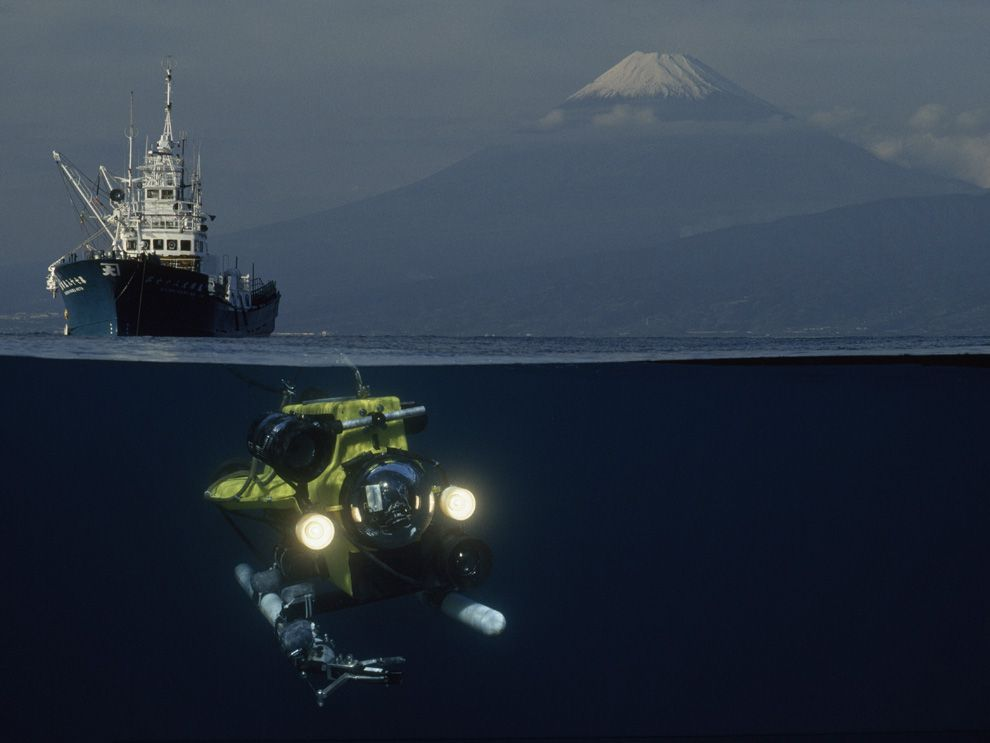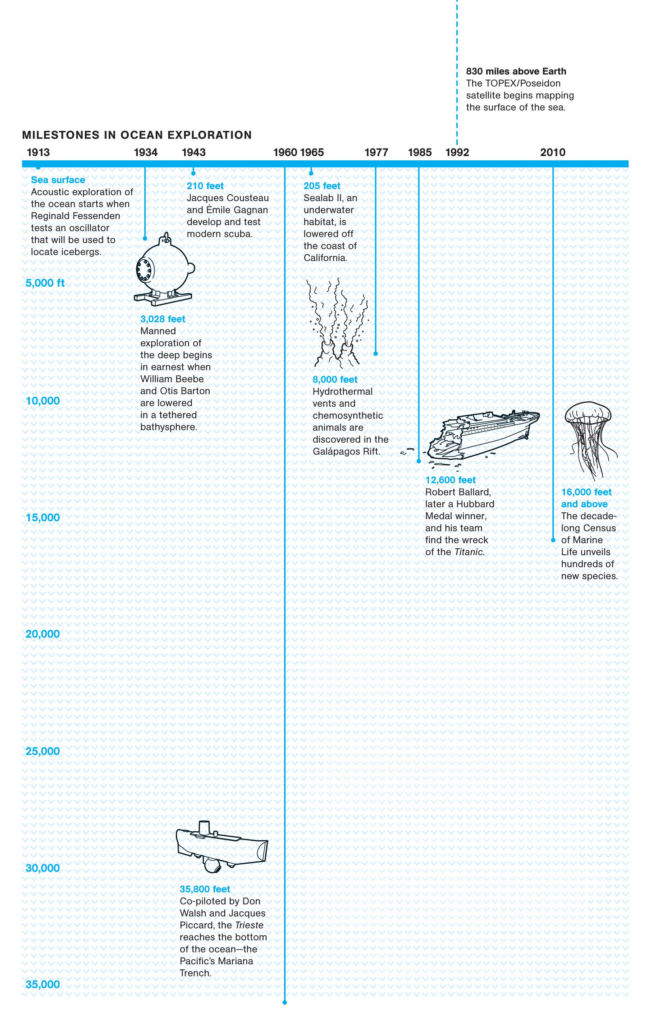Oceanography is the study of all aspects of the ocean. Oceanography covers a wide range of topics, from marine life and ecosystems to currents and waves, the movement of sediments, and seafloor geology.

Oceanography is the study of oceans. Scientists who study oceanography are called oceanographers.
Many things happen in the ocean. Oceanographers study how animals, plants, rocks, currents, and the ocean weather affect each other. For example, certain sea animals can only survive if the right chemicals are in the water. Meanwhile, ocean currents may change the water’s chemistry.
There are four main types of oceanography. These are biological, chemical, physical, and geological.
Biological Oceanography
Biological oceanographers study sea life. They study the ocean’s plants and animals. They want to know how the environment affects them. Certain oceanographers are called marine biologists.
Some marine biologists study seaweed and other plants. Others may study whales or fish. They check if these animals are healthy.
Physical Oceanography
Physical oceanographers study the physical environment of oceans. They measure ocean temperatures. They study waves and tides. Their goal is to understand how the ocean moves.
Physical oceanographers look at ocean currents. These currents move seawater around the globe. They have a big effect on Earth’s weather and climate.
Geological Oceanography
Geology is the science of the planet. It includes the study of rocks and how they form. Geological oceanographers look at the seafloor. They also study coastlines.
JOIDES Resolution is a ship used by a group of scientists. It helps with geological projects. It drills into the seafloor. Samples are brought to the surface for study. These samples help scientists understand what Earth was like in the past. They can also help predict what it will be like in the future.
Chemical Oceanography
Chemical oceanographers study the chemistry of the ocean. These scientists want to understand how chemistry affects sea life. They also study the effects of pollution.
Human pollution is making the oceans more acidic. Humans are releasing more carbon dioxide into the atmosphere. This is a gas that is causing Earth to warm up. Some of this gas is also mixing with ocean water and creating acid. This acid is harming shellfish, like clams.
Chemical oceanographers are studying the problem. They are working on ways to protect shellfish.
Oceanography Yesterday
Oceanography has a long history. It is related to human exploration and discovery.
Polynesians have been expert sailors for thousands of years. Experts believe they started exploring about 30,000 years ago. They started from Asia. Their boats spread out across the Pacific Ocean. They colonized many islands, including Hawai’i. Polynesians used their knowledge of currents. They also knew how to read the stars to navigate.
About 700 years ago, more European ships set out to explore. They used the sea to reach new lands. Explorers found new trade routes. Prince Henry of Portugal created a special school of oceanography. He is remembered as “Henry the Navigator.” This school helped sailors learn more about seas and mapmaking.
This knowledge helped launch the Age of Exploration. It included expeditions by Christopher Columbus and James Cook. These explorers helped map the world’s oceans. New tools were created and improved. Some of the most important tools were the compass, astrolabe, and chronometer. The compass was used to track the ship’s direction. The astrolabe was used to measure how high the stars were from the horizon. The chronometer was used to track time.
Hundreds of years later, sailors and navies used submarines. This led to a new technology called sonar. Sonar measures the distance between objects. It sends out sound waves from a ship or submarine. The sound bounces off of surrounding objects. The farther the object, the longer it takes for the sound to bounce back to the ship. This technology helps scientists measure the world under the sea.
Satellites have advanced oceanography, too. In 1978 the SEASAT, a U.S. satellite, was sent into space. It could observe and study the ocean around the globe. It took pictures and measured sea and ice conditions. It collected huge amounts of information.
In the 1970s, the United States set up a series of floating devices at sea. The devices were placed across the Pacific Ocean. They recorded water temperature and other data. This information was sent to science labs by satellite. It helped them better understand currents and climate.
Oceanography Today
Today, oceanographers have more tools than ever. Computers help them with their research. Research robots let these scientists explore the deep sea.
BIOMAPER is one example. The device is dragged behind a ship. It has sensors to study the sea. It uses sonar to find underwater particles. It helps scientists find small marine creatures, like plankton and krill. Many animals feed on this tiny sea life. Large numbers of plankton and krill are a sign of healthy oceans.
JASON is a deep-diving vessel. It is steered by remote control. This machine lets scientists explore the seafloor safely. It can dive as deep as six kilometers (four miles). It can work for many days at a time. JASON has many instruments. Cameras and sonar map the seafloor. Robotic arms let scientists collect samples of rocks and sea life.
JASON has also been useful for schools. It sends underwater pictures to classrooms. This high-tech explorer lets students see oceanographers at work.


